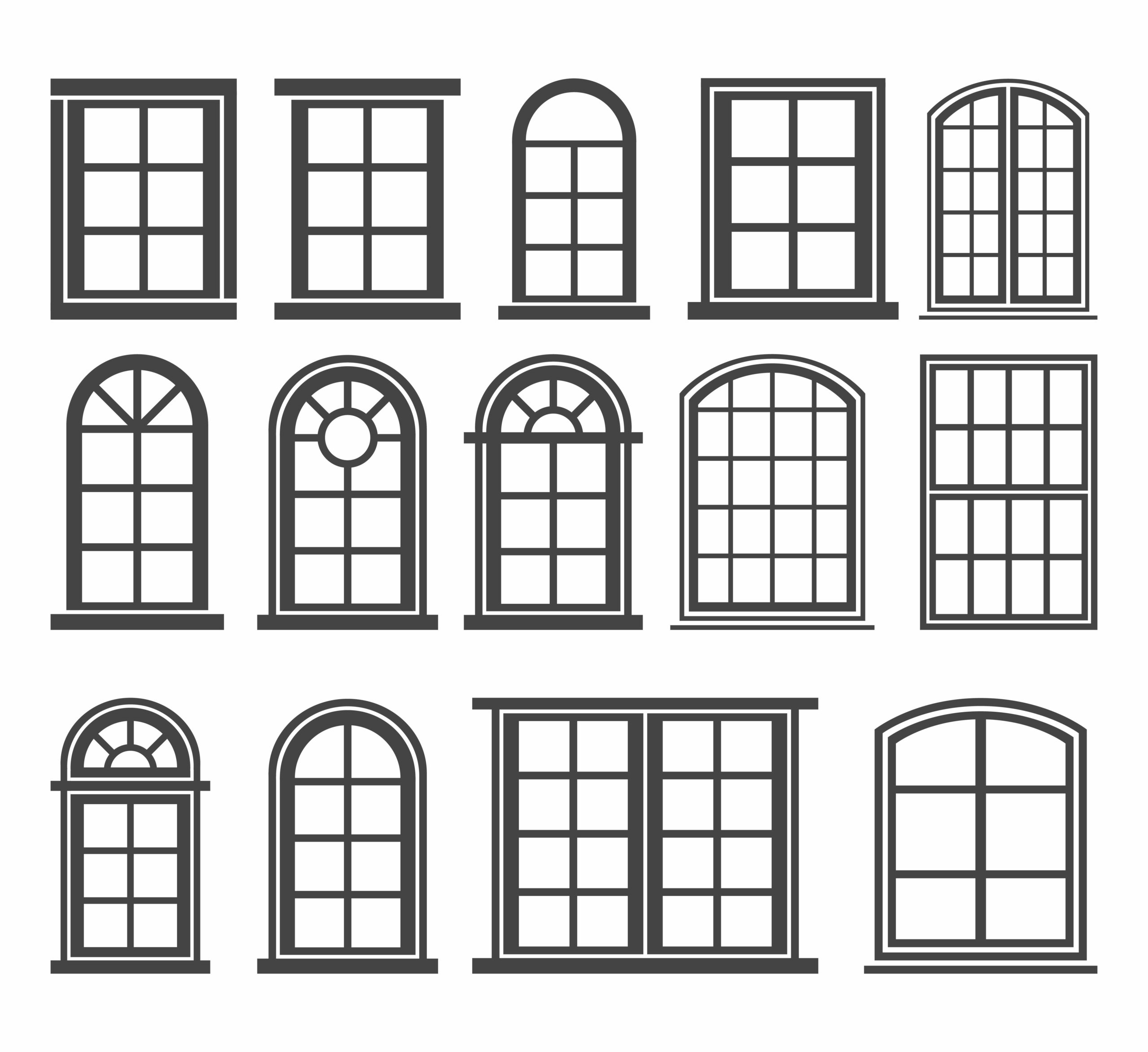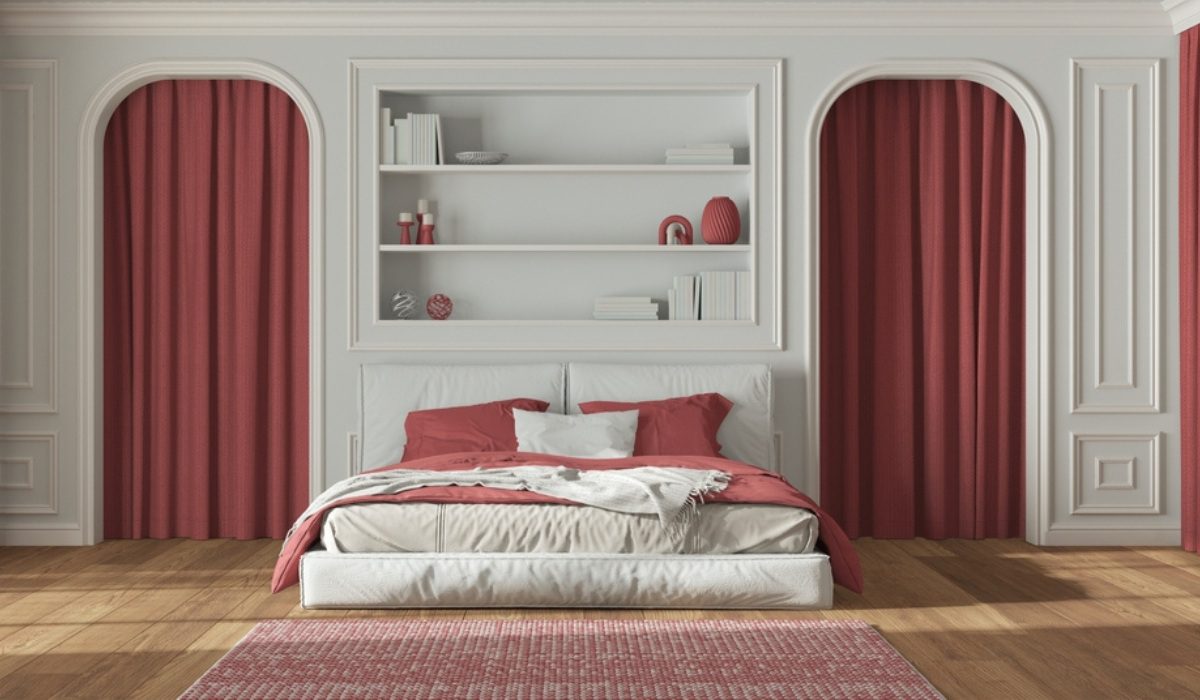An arch is a vertically curved structure that spans an elevated area that may or may not support the weight above it or, in the case of a horizontal arch such as a dam, the hydrostatic pressure against it. Intrados is the term for the internal curvature of an arch, while extrados refers to the outward curve. The primary purpose of the arches is to support the weight of the wall that is located above the apertures.
Arches have been a common architectural feature since the time of the Etruscans, who are credited with their design, although the Romans improved upon it and spread its use. Vaults, arcades, and bridges are just a few examples of other structures that use the same design and building methods as arches.

Source: Pinterest
Engineering of arches
Arches are typically built with compression-resistant materials like concrete or masonry. Arches need to be built when the distance between their supports is large and the weight being transferred to those supports is significant. Arches are another form of architecture used to improve the building’s visual appeal.
The flank-to-flank relationship is created by wedge-shaped blocks called voussoirs, with the upper perimeter being wider than the lower edge. The force of gravity acting on the arch tends to squeeze the voussoirs together. Voussoirs at the top of the arches are known as the keystone because of their central location.
Although the arch itself is strong enough to hold its weight, temporary under-arch supports in the shape of timber “centres” (also known as “centring” or “arch formers”) are still required until the keystone is installed.
The intrados is the term used to describe an arch’s inner lower curvature. Extrados refers to the outer top curve of the arch. The line at which the arch begins to rise from its vertical supports is called the springing line.

know about: ashlar masonry
Types of arches
There are distinct categories of arches, distinguished by their specific building shapes, and each is described in detail below.
According to the shape
Point shape arch
Similar to other types of arches, those with a pointed shape are referred to as Gothic arches. At its apex, the pointed shape arch bears two arcs of the circle, which come together to form a triangle.
Triangle elements may be equilateral or isosceles (similarly recognised as lancet arch).

Source: Wikipedia
See also: House pillar design ideas to add a luxurious appeal to your home interiors
Horseshoe arch
The name horseshoe arch was given to this structure due to the similarity between its shape and that of a horseshoe, which curves more smoothly than a semicircle. Arches in the shape of horseshoes are typically utilised for architectural purposes.

Source: Wikipedia
Flat arch
The flat arch generates an equilateral triangle within Intrados as a basis at an angle of 60° degrees. The flat arch is commonly used for building structures with minimum weight requirements.
In contrast to the curved nature of the Extrados, the Flat arches’ Extrados is straight and flat. The intrados is also flat and adds around 10 to 15 millimetres to the car’s camber. The most vulnerable type of arch is a flat arch.
Segmental arch
When the arc of a circle is smaller than 180 degrees, we have what is called a segmented arch. Specifically, this arch is known as a Syrian arch. The segmental arch has a reasonable capacity to resist thrust and is among the toughest arches.
The segmental arch was first developed by the Romans. In the 20th century, this sort of purchase was commonly used in the installation of doors and windows in private homes.
For buildings, the conventional arch style is the segmental arch, in which the arch’s centre is located below the springing line. The thrust in a segmental arch travels at an angle to the abutment.
Semicircular arch
The central point of the semicircular arch is where the spring line is located. The thrust delivered to the abutment in a semicircular arch is all vertical. The arch is roughly round in form.

Source: Wikipedia
Venetian arch
A typical Venetian arch has three points of support. The height of the crown is greater than the height of the springing line. The pointed arch has many variations, including the Venetian arch. It has four hubs, all located along the spring axis.
Semi-elliptical arch
The semi-elliptical arch can have either three or five foci. As with the semicircular arch, the basket-handle arch is another common name for the semielliptical arch.
Stilted arch
The curve of a stilted arch begins above the impost line. There is a semicircular arch inside this arch, and it has two vertical portions at the springing – the point where the arches of stilts meet the horizontal.
Relieving arch
Above a flat arch or on a wooden lintel, you can build one of these. The relieving arch’s primary function is to increase structural integrity. It’s important to incorporate the apexes of this arch into the abutments properly.
By reducing the arch’s pressure, we can easily replace the rotting wooden lintel without compromising the arch or the building’s integrity.
Arches classification according to construction material
Stone Arches
Similarly, the stone arches are subdivided into two categories, which are as follows:
A. Ashlar arches
For the construction of the arches, the stones are shaped and dressed appropriately. The joints are adequately filled with cement mortar in order to achieve sufficient bonding. Similarly, Ashlar stones are employed in the construction of flat arches.
B. Rubble arches
Rubble arches are utilised to create arches with a span of up to one metre. These types of spans are composed of rubber stones that have been appropriately pounded and treated. The rubble arches are unstable and are typically only used for substandard work. The mortar is used to bind stones together.
Occasionally, these are also used as relieving arches up to a depth of 37.5 cm; however, they are constructed in a single ring. If the depth is higher, the headers and stretchers can be alternated to create two rings.
2. Brick arches
Brick arches are one of the most commonly used types of arches in construction. This style of arch is constructed with regular bricks. The construction of the brick arches involves the use of cement mortar. The brick arches are classified into four distinct categories.
A. Rugged brick archway
These brick arches are often wedge-shaped. This sort of arches is utilised when completion accuracy is not crucial. These are created with standard bricks without the addition of voussoirs.
The arch curve is created by making wedge-shaped joints that are extremely thick at the extrados and less thick at the intrados. Thus, it appears unappealing. Therefore, it is not permitted for exposed brickwork.
B. Fine-axed brick arch
The fine-axed arches are constructed by arranging bricks into the appropriate form. In the case of the production of fine-axed brick arches, the bricks are often chopped into wedge-shaped pieces, of which any three are typically used. These are approximately sized and shaped. Therefore, the entire surface of this form of arches is incredibly aesthetically pleasing.
C. Gauged brick arches
This type of arch is relatively costly to construct, and the bricks used in its construction must be finely dressed. For the construction of the gauged brick arches, skilled craftsmanship was required.
In the gauge brick kind of arch, bricks are cut with a wire saw to the exact shape and size of the requisite voussoir. The bricks are completely prepared, and lime putty is used to unite them. For gauged brick arches, however, only soft bricks are used. The joints are slender, delicate, and radial.
D. Manufactured brick arches
These one-of-a-kind bricks are manufactured to resemble the precise shape and size of voussoirs, resulting in very excellent craftsmanship. As a binding substance, lime putty is used.
3. Cement Arches
The stone arches are grouped into two distinct categories.
A. Arches made of solid concrete blocks
Initially, monolithic concrete arches were used for greater spans. Typically, either plain or reinforced cast-in-place concrete is used to create monolithic concrete block arches. The thickness of arches with spans of up to three metres is around 15 centimetres. The monolithic concrete block must cure for at least 14 to 28 days.
B. Arches made of precast concrete block
These sorts of arches are constructed using precast concrete blocks. The precast concrete blocks are supplied in the precise shape and dimensions required for the construction of arches.
For the creation of precast concrete block arches, a specific type of mould is developed based on the requirements of the keystone.
The 1:2:4 ratio is applied in the manufacturing of precast concrete blocks. Due to the precise size and shape of the precast concrete blocks, the view will be rather pleasant.
Based on the number of centres
Arches categorised according to the number of centres are listed below.
One-centred
The one-centred variety of arches has only a single unique centre. This classification of arches includes semicircular arches, Flat arches, horseshoe arches, segmental arches, and others. In other instances, a totally circular arch is provided for circular windows; similarly, the so-called bull’s-eye arch falls under these categories.
Two-centre arch
The two-centred arch type consists of two centres. The pointed arches, Gothic arches, and lancet arches are positioned beneath two-centred arches.
Three-centred arches
This category of arches has three centres. The classification of the elliptical and equilateral arches as three-centred arches includes the equilateral and elliptical arches.
Four-centred arches
This category of arches has four centres. The Venetian arches are categorised as four-centred arches, which feature a total of four centres. Similarly, Tudor falls into this category.
Five-centred arches
The five-centred arches have a total of five centres, which allows for the formation of a semi-elliptical shape.
FAQs
What holds up an arch?
The abutments are the bridge's supporting structures; they bear the weight and prevent the structure's ends from extending outward.
What does drop arch mean?
Arch with a sharp point at each end that is drawn from the middle of the span.






